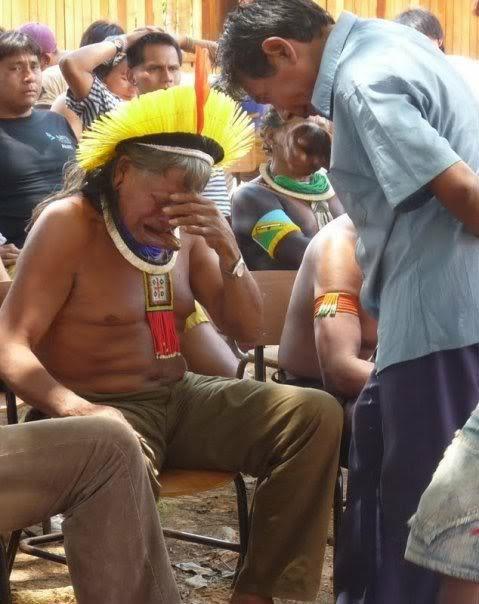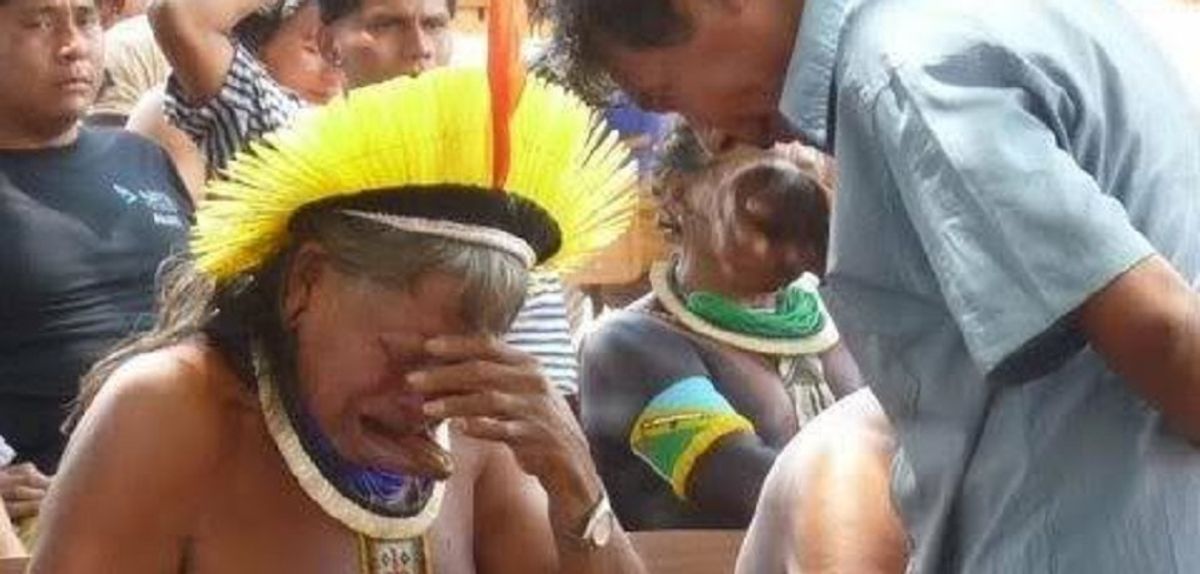The giant Belo Monte hydroelectric dam complex built on the Xingu River in the northern Brazilian state of Pará is the fourth-largest dam in the world (after the Chinese Three Gorges Dam and Xiluodu Dam, and the Brazilian-Paraguayan Itaipu Dam). The Belo Monte dam project was the target of opposition both within Brazil and internationally for a number of reasons, including its potential impact on the environment and on the indigenous peoples and other residents of the area.
One of the groups affected by the Belo Monte dam project was the Kayapó tribe, who Amazon Watch reported in mid-March 2013 were spurning a $9 million offer from Brazil's state-owned electricity agency to fund development projects in their region and were reaffirming their opposition to the dam:
Historically the Kayapó have presented the most significant obstacle to the Brazilian government's plans to dam the Xingu, having spearheaded a successful movement to stop the first attempts to build a major complex of hydroelectric dams in 1989. The Xingu flows northward from Brazil's savanna through Kayapó lands for 500 km and then continues for another 500 km until it reaches the city of Altamira where Belo Monte is under construction. A mega-dam on the river would have serious implications for the peoples who rely upon the entirety of this waterway and the abundant fish, animal, and plant life it sustains.
In [a] letter to ElectroBras [Brazil's state-owned electricity agency], the Kayapó state: "We have decided that your word is worth nothing. The conversation is over. We, the Mebengôre Kayapó people have decided that we do not want a single penny of your dirty money. We do not accept Belo Monte or any other dam on the Xingu. Our river does not have a price, our fish that we eat does not have a price, and the happiness of our grandchildren does not have a price. We will never stop fighting: In Altamira, in Brasilia, or in the Supreme Court. The Xingu is our home and you are not welcome here."
These events led to the circulation of the following photograph and accompanying description on the internet in early 2013:
While magazines and TV chains report about the lives and love affairs of movie actors and actresses, football players and other celebrities, the Chief of the Kayapo tribe heard the worst news of his entire life:
Mrs. Dilma, the president of Brazil, has given her approval for the construction of an enormous hydroelectric central (the world’s third largest one).
This means the death sentence for ALL the tribes living at the shores of the river because the barrage will flood more or less 988,421 acres of the forest. More than 40,000 natives will have to find other living surroundings where they will be able to survive. The destruction of the natural habitat, the deforestation and the disappearance of several species of plants and animals will be a fait accompli.
We know that a simple image is the equivalent of a thousand words, it shows the price to be paid for the "quality of life" of our so-called "modern comforts." There is no space in the world anymore for those who live differently. Everything has to be smoothed away, that everyone, in the name of globalization must lose his and her identity and way of living.
If this enrages you, I urge and implore you to "SHARE" this message to all your friends, relatives and acquaintances.
Thank you in the name of life, nature and biodiversity.

Although legendary Kayapó chief Raoni Metuktire was "among Belo Monte's most emphatic and strident opponents," the photograph of him displayed above (which was circulated on the Internet in mid-2011 in conjunction with protests against the Belo Monte Dam) does not capture him expressing grief at the news that Brazil's president had given approval for the dam's construction. According to Amazon Watch, the picture captured Chief Raoni crying for an entirely different reason:
The Kayapó protested in the town of Colider. While many people have seen the photo of Chief Raoni crying, he was not crying in reaction to the Brazilian government's announcement of the license to build the Belo Monte Dam. He was crying because he had reunited with a family member, a common practice among the Kayapó.
"I was not crying because of the government's decision," confirmed Raoni. "I'm going to keep fighting. I am alive and strong, and as long as I'm alive I will continue to fight for my people!"

